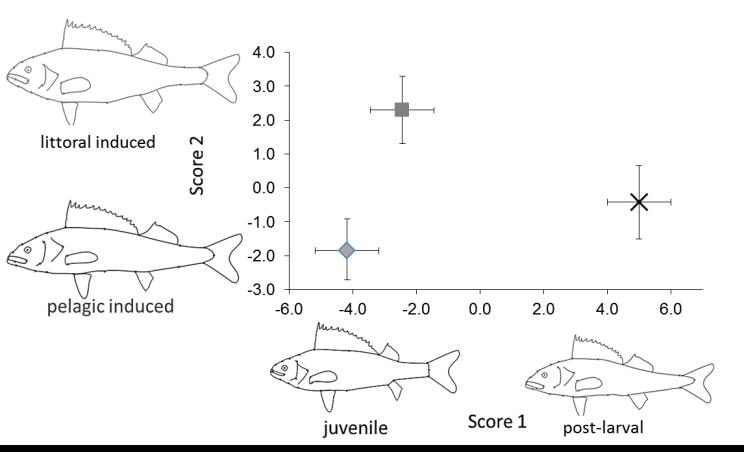Evolutionary consequences of phenotypic variation in shoaling fish
Juvenile perch form dense schoals of related individuals (Behrmann-Godel et al. 2006) and perform collective behavior when searching for food or avoid predation. Individuals within these schoals have a very similar morphology resulting in a specific group phenotypic composition (GPC). Different shoals living in close proximity can vary in their GPCs and may specialize on different diet.
In recent experiments combining laboratory, semi-natural experiments in mesocosms and field work, we found striking evidence that juvenile perch can adjust their phenotype by phenotypic plasticity and that phenotypic divergence between fish shoals in the wild might result from individuals that plastically adapt their phenotypes to better match shoal mates. Our results give first empirical support to the hypothesis that phenotypic plasticity allows group-mates to acquire morphologic similarities and thereby diverge from congeners in other groups. Benefits for individuals in fish shoals with highly similar morphologies can include for example reduced predation risk because of difficulties for predators to target single individuals (the confusion effect). (Publication currently in preparation)
In the future we will profit from our unique ability to induce different phenotypes of perch under lab conditions. These can be used to form different GPCs by swapping individuals between groups. The groups can then be used to experimentally study variables such as foraging efficiency as indicator for an evolutionary implication of GPC and how it affects selection on the individual as well as on the group level.
Behrmann-Godel J, Gerlach G, Eckmann R. (2006). Kin and population recognition in sympatric Lake Constance perch (Perca fluviatilis L.): can assortative shoaling drive population divergence? Behavioral Ecology and Sociobiology: 59, 461-468.

